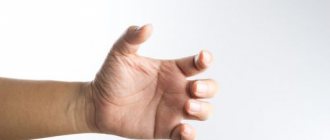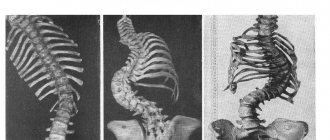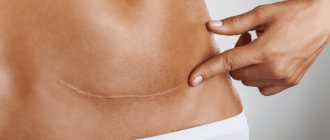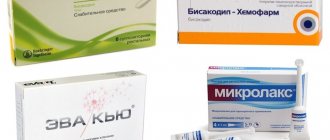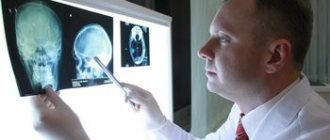Hand trembling in older people usually does not cause much surprise; we most often attribute this disorder to age-related changes. However, involuntary and uncontrollable shaking movements of the limbs (doctors call this tremor) worry not only the elderly: the palms of a baby, a teenager, and a mature person can shake. Let's try to figure out what hand tremor is, why it happens, and what treatment helps with this condition.
Why do young and old hands shake?
Why your hands shake: reasons
Tremor refers to an involuntary oscillatory movement (shaking) caused by muscle contraction. Trembling can be short-term and constant, and the amplitude of movements can also differ - from barely noticeable to very frequent and sweeping.
Tremor can affect different parts of the body: when seeking medical help, some patients complain of trembling in the limbs, others have a shaking head, and in others the whole body. Trembling can be observed on one side (tremor of one hand) or be symmetrical. In this article we will take a closer look at such a condition as tremor in the hands.
Experts distinguish between physiological and pathological tremor.
- In the first case, we are talking about a functional disorder (primary tremor), not associated with any disease - as a rule, such a disorder is temporary and does not require special treatment.
- Pathological (secondary) tremor is a symptom, consequence and/or complication of a certain disease.
General characteristics of the condition
Tremor is an involuntary rhythmic contraction of muscles that a person cannot control. The process involves one or more parts of the body (most often it occurs in the limbs, less often in the head, vocal cords, and torso). Patients in the older age category are most susceptible to chaotic muscle contractions. This is due to weakening of the body and concomitant diseases. In general, tremor does not pose a serious threat to life, but it does significantly reduce the quality of life. The shaking can be so severe that it prevents a person from lifting small objects or sleeping peacefully.
Possible reasons for development
Content:
- General characteristics of the condition
- Classification of involuntary contractions
- Features of therapy
In most cases, tremors are caused by injuries or pathological processes in the deep layers of the brain responsible for movement. Involuntary contractions can be a symptom of multiple sclerosis, stroke, and neurodegenerative diseases (for example, Parkinson's disease). They may also indicate kidney/liver failure or a malfunction of the thyroid gland. In medical practice, a predisposition to tremor due to genetic factors is often encountered.
Sometimes trembling does not indicate a disease, but is a protective reaction of the body to external stimuli. Among them are mercury poisoning, alcohol intoxication, and severe emotional stress. In this case, the tremor is short-term and disappears along with the stimulus.
Trembling never occurs for no reason. If you cannot explain the origin of the tremor or its intensity seems frightening, consult a doctor.
Physiological (benign) tremor
- Excitement, fear and anxiety are a fairly common explanation for why arms and legs shake. This state is well known to emotional people who are intensely experiencing certain events and who take everything that happens around them to heart. In such situations, people say “the ankles are shaking,” implying feelings of strong excitement. Once a person calms down, the tremor disappears on its own.
- Prolonged physical stress is another cause of involuntary trembling of the limbs. Professional athletes, people whose profession involves strenuous work with small objects (jewelers, watchmakers, surgeons), as well as loaders - it is not uncommon for them to experience muscle trembling under tension.
Why do young and old hands shake?
- Trembling limbs in infants is often due to the fact that their nervous system is not fully formed. Temporary tremor occurs under the influence of various stimuli: for example, the child is hungry, scared, does not want to bathe, change clothes, etc., and against the background of all this, rhythmic muscle contraction can be observed. Of course, parents need to ensure that the baby is monitored by a specialist to make sure that the baby’s development is progressing normally (tremors are often observed in the first months of a child’s life in cases where there was a difficult pregnancy and/or birth injuries).
- Hand trembling at a young age can be associated not only with anxiety (for example, during exams), physical overexertion during sports training, but even with ordinary hypothermia. The latter sometimes leads to involuntary muscle contraction, resulting in shaking hands. Another reason for shaking hands in teenagers is hormonal imbalances.
- People who abuse alcoholic beverages and also take various stimulants (drugs, tranquilizers) deserve special attention. Why are their hands shaking? Alcohol and drugs overstimulate nerve cells (resulting in uncontrolled muscle contraction), which can lead to damage to the nervous system and brain.
Alcohol addiction is one of the reasons why hands shake
It should be noted that temporary trembling of the hands can be a consequence of the effects of tonic drinks (strong tea, coffee), as well as medications. Before taking any medicine, you need to carefully study the instructions - tremor may be indicated in the side effects section (some chemical compounds, affecting the psychoneurological sphere, cause undesirable consequences).
If trembling of the limbs is a functional disorder, it is enough to eliminate the provoking factor, and the unpleasant phenomenon will go away on its own. For example, in case of alcohol poisoning, it is necessary to detoxify the body, and hand tremors will disappear (provided that at this stage brain damage has not yet occurred and toxic polyneuropathy has not developed). If the tremor bothers you for a long time (more than two weeks), you need to undergo an examination.
Drug treatment
Propranolol (anaprilin) 20-80 mg 4 times a day (effective also for increased physiological tremor). Primidone 50-250 mg 3 times a day - if anaprilin is ineffective or intolerant. Benzodiazepine tranquilizers (diazepam 2-10 mg, lorazepam 1-2.5 mg, oxazepam 10-30 mg orally 3-4 times a day) for increased tremor against the background of chronic anxiety conditions. A single dose of small amounts of alcohol temporarily reduces the severity of tremor in 50% of patients. The effect occurs 10 minutes after administration and lasts 3-4 hours.
Pathological tremor: causes
Pathological trembling of the limbs is usually associated with various deviations of the nervous system (disruption of the activity of various parts of the peripheral and central nervous system). Hand tremors in this case are a symptom of a serious systemic disease. Most often, prolonged trembling of the limbs is associated with the following pathologies:
- Parkinson's disease. Tremor occurs as a result of damage to the subcortical structures of the brain. Feature - trembling increases during periods of rest and decreases when performing any actions. Often the tremors are asymmetrical in nature (there is less tremors on one side and less tremors on the other).
Incurable neurological disease - Parkinson's disease
- Multiple sclerosis. Another disease in which the hands shake (with multiple sclerosis, the upper limbs most often tremble).
- Damage to the cerebellum. The causes of damage (changes in the cerebellum) are most often poisoning and traumatic brain injury. Feature – trembling intensifies with active and purposeful movements.
- Diseases of the endocrine system. Hand trembling is a fairly common symptom in people with endocrine disorders. Tremors often occur due to an excess of thyroid hormones. Along with this symptom, patients complain of weakness, increased sweating and irritability.
- Alzheimer's disease (hand tremors are one of the symptoms of the disease).
- High or low blood pressure.
- Cervical osteochondrosis. This disease leads to impaired blood supply to the brain, which can cause neurological pathologies.
Degenerative changes in the cervical spine
- Encephalitis (after a bite by an encephalitis tick, convulsive trembling of the hands usually appears).
- Hypoglycemia (a decrease in blood glucose levels increases the activity of the sympathoadrenal system, and, as a result, tremors appear in the hands).
- Poisoning – food, chemical, medicinal. When poisoning occurs, the body becomes intoxicated. Due to toxins, normal motor activity is disrupted, which can result in tremors.
A special type of pathology is essential tremor. As a rule, this is a hereditary disease that is not associated with disorders of other systems. A person complains of periodic trembling of the limbs (most often of both hands), sometimes this manifests itself when writing (writer's cramp). The first symptoms of the disease usually appear after 45 years of age.
Causes
There are many causes of hand tremors:
- Genetic factor (determines the essential form of the disease).
- Parkinson's disease.
- Some pathologies of the endocrine system.
- Metabolic disorders. For example, Wilson-Konovalov disease may be the cause.
- Cerebral vascular lesions are different types of strokes.
- Diseases due to infections. This includes epidemic encephalitis.
- Various space-occupying formations: from tumors to hematomas.
- Taking certain medications. The shaking effect is caused by some types of antidepressants and antipsychotics.
- Serious poisoning - carbon monoxide, salts of heavy metals.
- Withdrawal syndrome that occurs during withdrawal of a substance to which a person is dependent. These are drugs, alcohol, some strong medications.
These are not all factors - in the practice of doctors there are others that can cause tremors of the limbs.
Diagnosis of tremor
If you experience tremors in your hands, you should first consult a therapist. In the future, you may need the help of a neurologist, psychologist, toxicologist, endocrinologist and/or other specialists.
When diagnosing, the doctor focuses on the patient’s complaints. An external examination and functional tests are carried out (the patient is asked to stretch his arms forward, write something, the sensitivity of different parts of the body is checked, gait is assessed, etc.). Additionally, laboratory tests may be prescribed (if endocrine diseases are suspected), as well as MRI and/or CT scan of the brain.
Diagnostics
The diagnostic search begins with an analysis of complaints, anamnestic information and a neurological examination. The clinical tremor rating scale allows you to objectify the intensity of tremor. If a syndromic diagnosis usually does not cause difficulties, then certain difficulties may arise with the nosological verification of the pathology. Additional methods are used for differentiation:
- Lab tests.
Some causes of tremor can be determined by the results of a biochemical blood test with the determination of thyroid-stimulating hormones, glucose, calcium, kidney tests and other indicators. Toxicological tests allow you to determine the concentration of toxic substances, drugs, and medications. If hepatolenticular degeneration is suspected, ceruloplasmin levels and urinary copper excretion are examined. - Tomography.
Neuroimaging is indicated for sudden onset, rapid progression, or combination of tremor with other neurological disorders. MRI of the brain reveals atrophic, ischemic lesions or other structural damage. Functionally active zones are examined using positron emission tomography. - Computer stabilography
. A stabilometric analyzer (stabilometric platform) with biofeedback helps to assess the characteristics of postural tremor. During the study, support reactions are studied, including when performing diagnostic tests - static and dynamic. - Tremorometry.
The most widely used method for recording involuntary rhythmic vibrations is using a computer polygraph, which evaluates the frequency and amplitude of trembling. To record tremorograms, tenso-, piezo-, and accelerometric methods are used. - Electroneuromyography.
It makes it possible to indirectly judge the parameters of trembling by the tension and relaxation of individual muscles. Electromyography helps differentiate tremor from other movement disorders and identify individual causes of tremor (polyneuropathy).
Cerebral vascular pathology is detected by transcranial ultrasound and angiography. The displacement of the midline structures and the state of the ventricular system are visible on the echoencephalogram. The hereditary nature of some diseases can be confirmed using molecular genetic tests. Conditions accompanied by tremor are differentiated among themselves and with other hyperkinesis.
Occupational therapy
Types of tremor
Different diseases have their own characteristic signs, and in order to figure out why your hands are shaking, the doctor clarifies how exactly the pathology manifests itself. Thus, a distinction is made between resting tremor and action tremor.
In the first case, involuntary movements occur when a person does not do any active actions (just sits, stands, lies). In the second case, the opposite is true: during rest there is no trembling, but as soon as a person wants to do something (pick it up, put it down, etc.), uncontrolled muscle contractions begin.
In addition, doctors distinguish between several types of tremor depending on the source of the disorder. For example, if tremors are associated with damage to the cerebellum, they speak of cerebellar tremor; if nerve fibers are damaged, neuropathic tremor is diagnosed. One of the most difficult cases is damage to the midbrain (rubal tremor). If your medical record says “dystonic tremor,” then the problem is related to disturbances in the functioning of the muscular system.
Cerebellum
Features of therapy
Muscle contractions do not always require treatment. Sometimes their manifestations are so insignificant that a person does not feel much discomfort and continues to function at his usual rhythm. In other cases, the search for suitable treatment directly depends on the diagnosis.
How is tremor diagnosed?
Diagnosis is based on studying the patient's medical history, physiological and neurological examination. At the stage of physiological examination, the doctor identifies the mechanism of development, localization and manifestations of tremor (amplitude, frequency). A neurological examination is necessary to obtain a complete picture of the disease. Perhaps involuntary trembling is associated with speech impairment, increased muscle stiffness, or other abnormalities.
After the initial examination, the doctor issues a referral for general urine and blood tests, and biochemical blood tests. This will help eliminate metabolic factors in the development of tremor (for example, malfunctions of the thyroid gland). Subsequent diagnostic procedures depend on the individual characteristics of the patient. For example, a specialist may prescribe an electromyogram (EMG). EMG is a method for studying muscle activity and muscle response to stimulation.
In case of brain injuries, a referral is given for a CT or MRI, and in case of severe tremors (the person cannot hold a pen/fork) - for a functional study. The patient is asked to perform a series of exercises, according to which the doctor assesses the condition of his muscles and the reaction of the nervous system to a particular task. The exercises are very simple - touch your fingertip to your nose, bend or raise a limb, etc.
Drug and surgical treatment
Essential tremor can be treated with beta blockers. The medication will not only normalize blood pressure, but also eliminate stress on the muscles. If your body refuses to respond to a beta blocker, your doctor may prescribe special anticonvulsant medications. For other types of tremor, when the main treatment has not yet worked, and you need to get rid of the tremors as soon as possible, tranquilizers are prescribed. They provide short-term results and can cause drowsiness, loss of coordination and a number of unwanted side effects. Moreover, regular use of tranquilizers can cause addiction. Botulinum toxin injections or high-intensity focused ultrasound can also be used for therapeutic purposes.
Do not self-medicate. Strictly follow your doctor’s recommendations, do not change the indicated dosages, so as not to worsen the situation.
If drug treatment is ineffective, doctors use surgical methods - deep brain stimulation or radiofrequency ablation. What it is? Deep brain stimulation is a surgical procedure in which a pulse device is inserted under the skin of the chest. It generates electrodes, sends them to the thalamus (the deep structure of the brain responsible for movement), thereby eliminating tremors. Radiofrequency ablation heats the thalamic nerve, which is responsible for involuntary muscle contractions. The nerve loses the ability to generate impulses for at least 6 months.
Hand tremors - treatment
As mentioned above, physiological tremor is reversible and usually does not require special treatment. It is necessary to understand what factor caused the undesirable reaction and eliminate it. As a rule, it is enough to avoid stressful situations, give up frequent consumption of strong coffee and tea, establish normal, full sleep, reduce the intensity of physical activity, and the trembling in the limbs will go away.
As a preventive measure, the patient may be shown a special course of exercises. Activities that promote the development of fine motor skills (knitting, embroidery, drawing, weaving, exercise with an expander, etc.) can be useful. Exercises with weights (you need to pick up something heavy) can help relieve trembling. A simple and effective exercise that anyone can do: clench your hands into a fist and unclench with a sharp movement, repeat 30-50 times.
If the tremor is pathological in nature, the underlying disease must be treated.
- For example, for essential tremor, drug therapy is usually prescribed. Patients are prescribed beta-adrenergic receptor blockers, vitamins, tranquilizers, as well as anticonvulsants and antiepileptic drugs. In some cases, when tremor leads to significant disturbances in activity and discomfort, and medications do not help, the patient may be indicated for surgical intervention, namely, implantation of electrodes in the area of the brain responsible for sensory stimulation.
- For tremors associated with chronic alcohol abuse and, accordingly, alcohol poisoning, you need to fight the addiction itself, and the tremors will go away. However, if you suddenly stop drinking alcohol, a person experiences a so-called withdrawal syndrome, during which their hands begin to shake even more. To alleviate the condition and remove unpleasant symptoms, drug treatment is used: the patient is prescribed calcium antagonists, beta blockers, tranquilizers and other medications.
- With cervical osteochondrosis, physical exercise and massage, which improve blood flow, help.
- In Parkinson's disease, which is still incurable (the disease gradually progresses), in addition to drug therapy, strength exercises are used (treatment in each case is selected taking into account the characteristics of the form of the disease).
There is no need to be embarrassed or ignore the problem if your hands are shaking. It is necessary to figure out what the violation is related to as soon as possible. In most cases, the pathology can be eliminated completely or to such an extent that it does not cause discomfort.
Treatment
Conservative therapy
Treatment of tremor is intended to reduce functional limitations and social maladaptation of patients. The basis of therapy is conservative methods, which are usually symptomatic. If secondary tremor is detected, treatment involves eliminating the causes of its occurrence and correcting the underlying pathology. Among the therapeutic measures used:
- Lifestyle optimization.
It is necessary to avoid situations that increase the intensity of trembling. In the early stages of the disease, patients are recommended to master adaptive methods - use pens and cutlery with thick handles, blunt scissors and knives, phones with voice control, etc. - Physical methods.
Methods of physical influence include the use of special orthoses that limit the mobility of the hand in the wrist joint. Assistance in mastering simple motor patterns is provided by physical therapy and occupational therapy, which are complemented by massage, reflexology and balneotherapy. - Pharmacotherapy.
Several groups of drugs are indicated for the treatment of tremor. Based on clinical feasibility, anticonvulsants (primidone, topiramate, gabapentin), antiparkinsonian drugs (levodopa, amantadine, pramipexole), beta-blockers (propranolol, atenolol, nadolol) are prescribed. For severe tremors of the head and voice, botulinum toxin A injections are performed.
Diagnosis and treatment of tremor
Guselnikova Zoya Ivanovna Physiotherapist of the highest qualification category
✓ Article verified by a medical expert
Tremor is a neurological disorder associated with reflex contraction of the muscles of individual parts of the body. The literal translation of tremor is shaking. Muscle oscillation is involuntary and poorly controlled. Easily diagnosed, but difficult to treat. It is important to determine what type of illness it is.
Types of violations
Tremor can be physiological or pathological. The first type occurs as a result of sports, extreme fatigue, stress situations, and drinking alcohol. In addition, involuntary fluctuations appear in overly impressionable people who worry about any reason and worry about trifles. Such tremor can be cured by eliminating the cause of the disorder.
The second type is a factor or consequence of a neurological disease. The disease remains with the patient for life.
Physiological tremor is classified into the following types:
- Resting tremor is a controlled trembling of muscles that are in a state of calm. When performing active actions, the shaking decreases or completely disappears.
- Inertial - muscle oscillation during movement, intensifies as it accelerates.
- Postural - muscle contraction during a long stay in one position.
Pathological tremor is divided into several types:
- Essential - genetic and age-related disorder.
- Dystonic is a disorder associated with one of the forms of vegetative-vascular dystonia. Usually observed in the part of the body affected by dystonic hyperkinesis.
- Parkinsonian - characteristic of patients with Parkinson's disease. Most often, this is a normal resting tremor.
- Primary orthostatic is a rare disorder that occurs when the patient gets up from a sitting or lying position. When moving to a vertical position, vibration is observed throughout the body, mainly in the muscles of the thighs and lower legs. The disorder is the cause of mental abnormalities.
- Cerebellar - tremors associated with disorders of the cerebellum. This type of tremor is characterized by a very low amplitude of vibration of the body or head.
- Psychogenic - characterized by sudden onset and remissions. Appears during passive movements. Caused by the presence of a neurological disease in the patient.
- Toxic - characterized by long-term use of drugs and alcohol. Involuntary fluctuations take on a pathological form and have irreversible processes.
The etiology of the disorders involves deviations in the interaction of central and peripheral mechanisms. In patients with tremor, there is a hereditary deficiency of inhibitory processes that affects the cerebellar system. The imbalance between the rate of contraction and relaxation of the muscles of a given structure is the main factor in body tremors.
Causes and symptoms
Tremor is painless, but significantly reduces quality of life. The violation affects a person’s performance. The patient feels an inferiority complex, which leads to psychological disorders.
Causes of physiological illness:
- side effects of medications;
- frequent smoking and drug use;
- genetic predisposition;
- physical exercise;
- abrupt withdrawal of alcohol;
- increase in body temperature.
Causes of pathological illness:
- damage to certain areas of the brain;
- neurological disorders;
- dysfunction of the endocrine system;
- vegetative-vascular dystonia;
- mental problems;
- panic attack;
- Parkinson's disease.
The symptoms of tremor are clearly expressed by vibrations of the hands, face, and body as a whole. If muscle tremors persist for a long time, you should urgently visit a specialist.
Which doctor treats you?
If involuntary fluctuations occur, only a neurologist can help you. The doctor will determine the type of tremors, the causes and prescribe treatment. Although tremor is virtually untreatable, there are treatments that significantly improve quality of life. An individual rehabilitation program is created according to the patient’s personal qualities.
Diagnosis and treatment
The examination is aimed at identifying factors affecting muscle contraction. Diagnosis of the causes of tremor is based on laboratory and instrumental methods:
- differentiated blood test;
- genetic research;
- Magnetic resonance imaging;
- angiography.
Treatment of tremor is carried out individually, based on the cause of the disturbance. Physiotherapeutic procedures, physical therapy and massage are of no small importance. In rare cases, surgical intervention is prescribed - stimulation of the cerebellum using electrical signals. Surgical methods are very effective, but pose a danger to life.
Expert recommendations
Body tremors are a disorder of the body that has virtually no cure. You need to come to terms with the syndrome and learn to live fully. The tremor is painless and does not affect the patient’s physical activity. To eliminate psychological worries about this, follow certain rules:
- Take auto training. Psychological relief will help in the first stages to cope with an inferiority complex.
- Wellness treatments. Swimming, massage and physical therapy will help reduce the frequency and amplitude of body vibration.
- Relaxation technique. Do relaxation exercises every day, especially before bed. Relaxation activities are the basis of a fulfilling life.
- Avoid stress. Create favorable conditions at home and at work. Don't oppress and don't let yourself be offended!
- Eat sensibly. Fatty and spicy foods have a negative effect on brain function.
- Get rid of bad habits. A healthy lifestyle is an indicator of a great mood.
Be sure to visit a neurologist from time to time. Avoid developing a more serious illness.
Rehabilitation and lifestyle
Recovery after therapy involves reducing physical activity and getting rid of factors that provoke the disorder. Follow all points of the rehabilitation program and you will feel relief. Physical activity is of great importance. Do light sports, relax more, create positive emotions!
